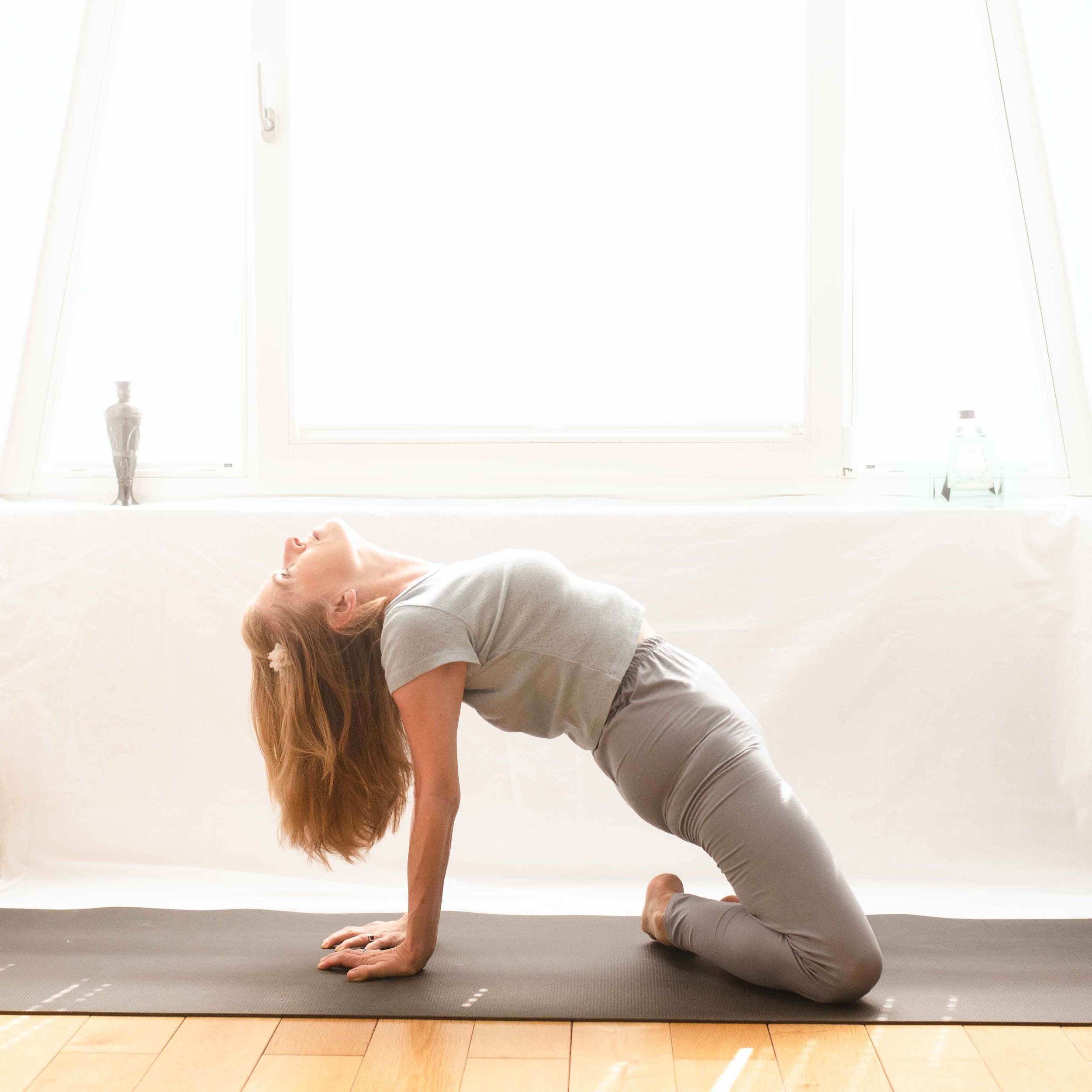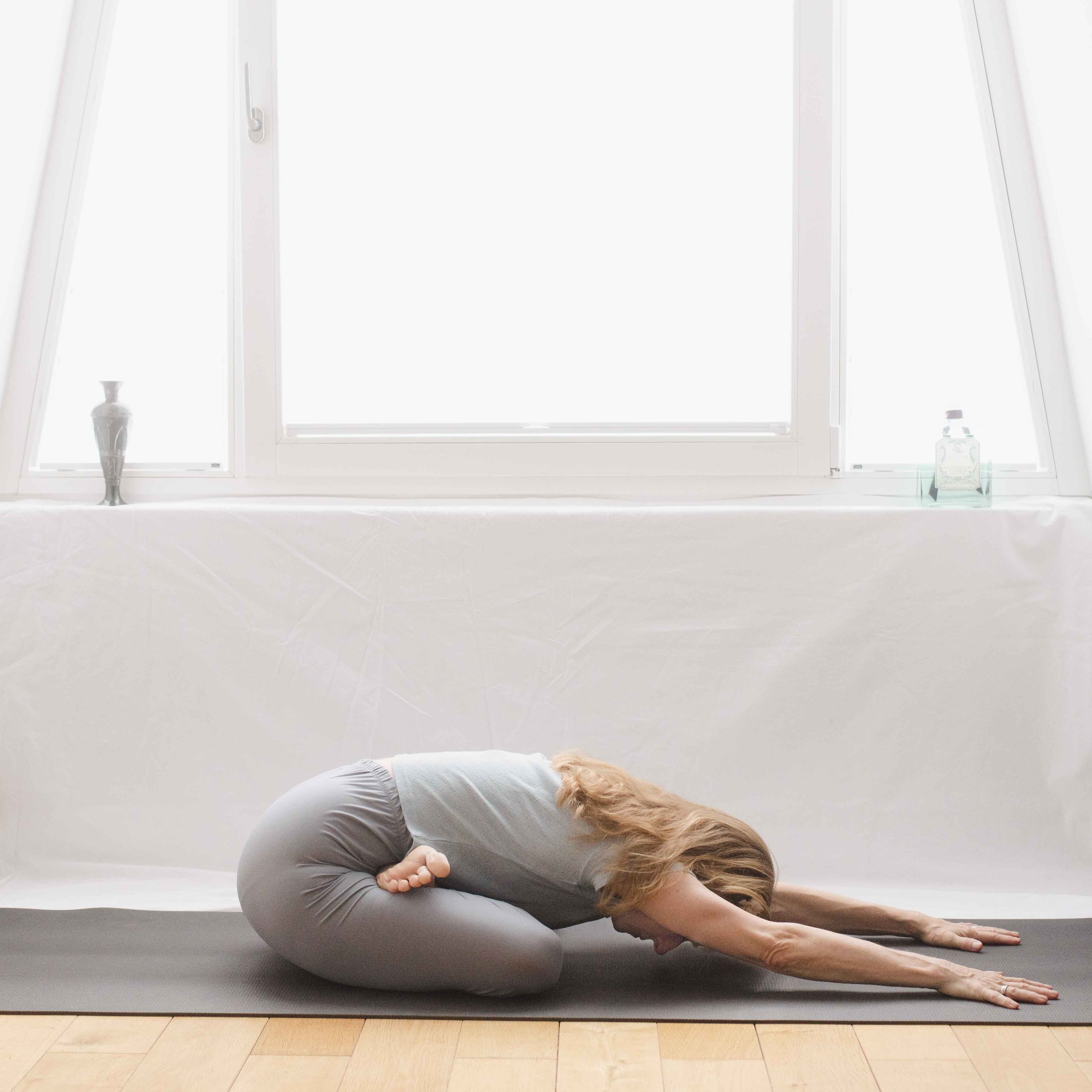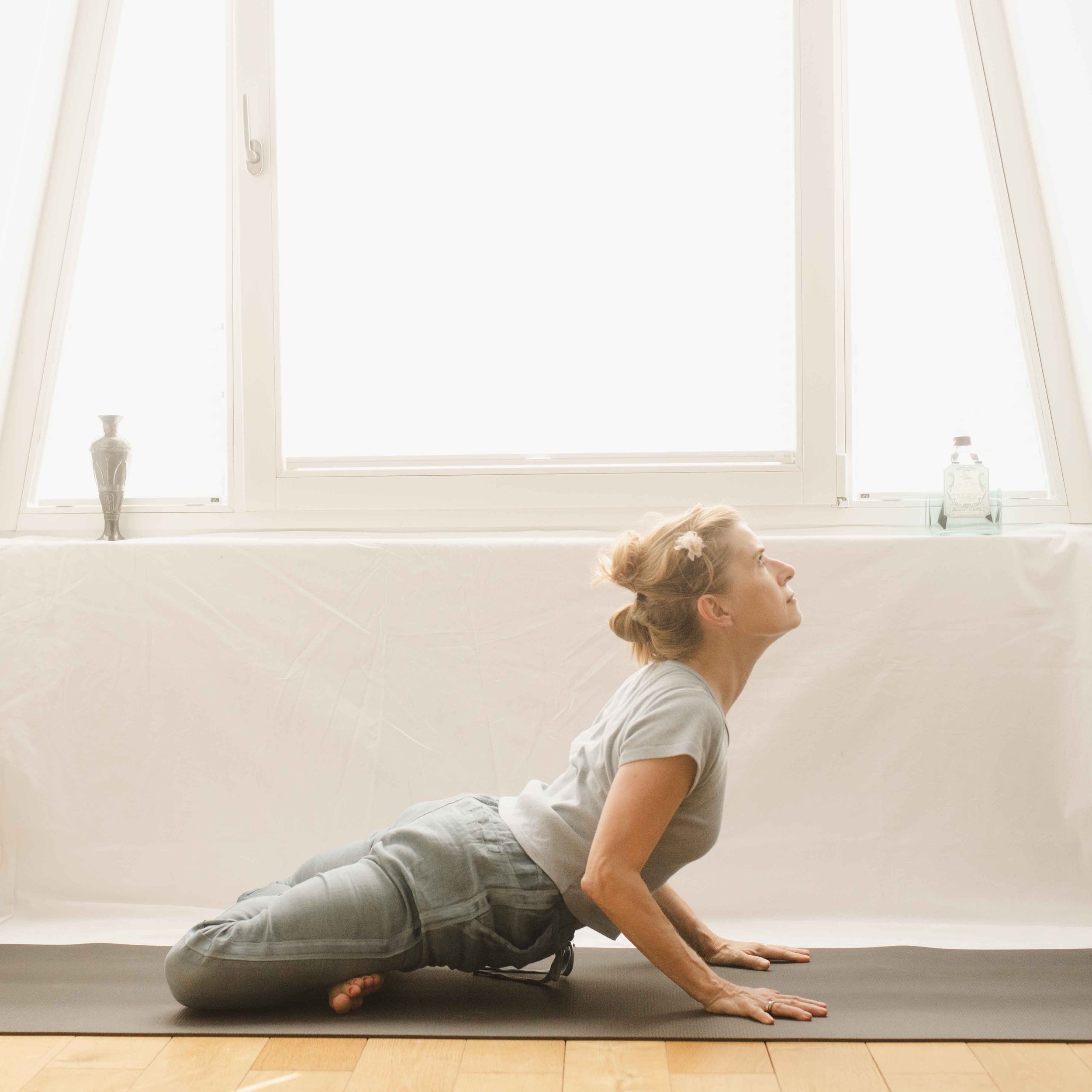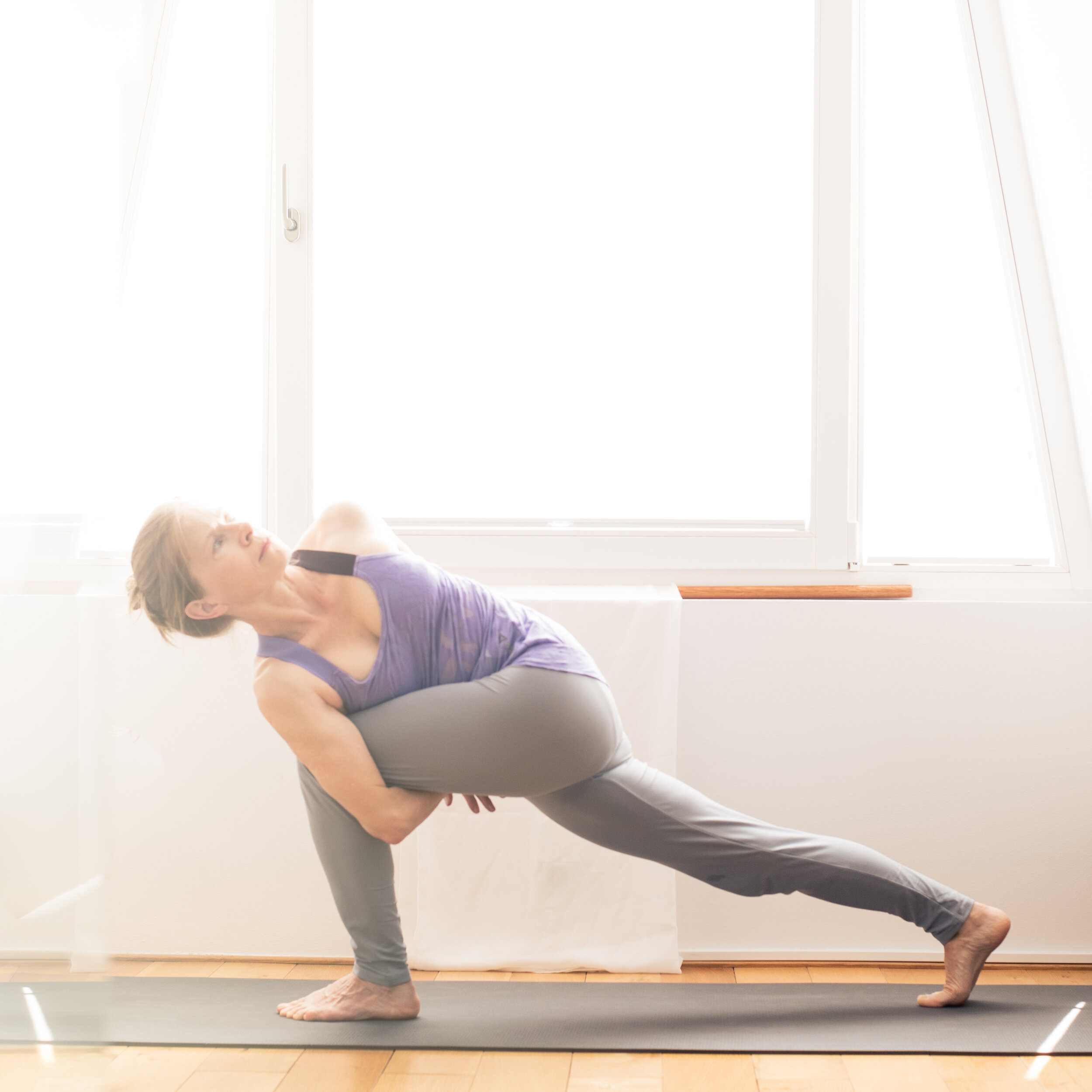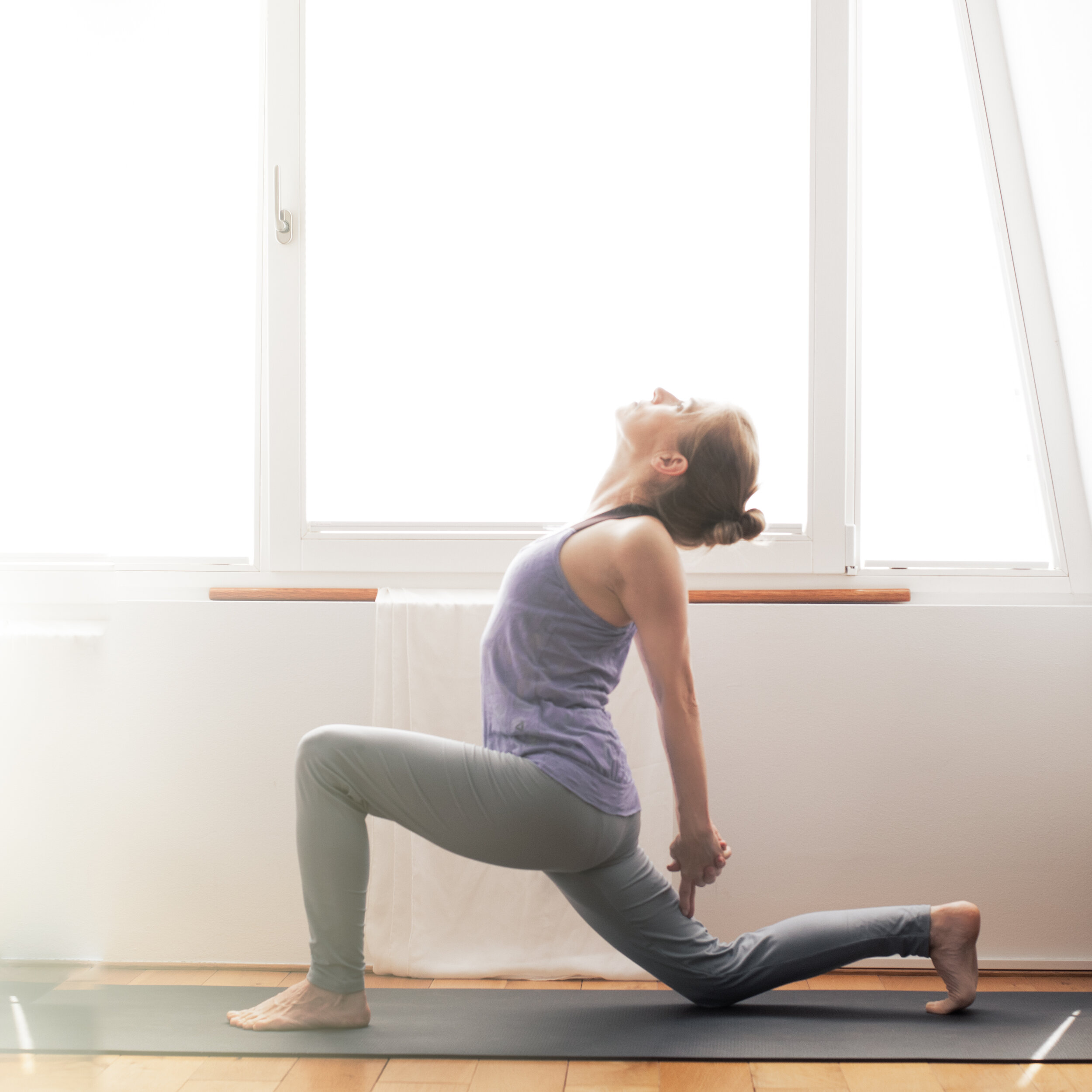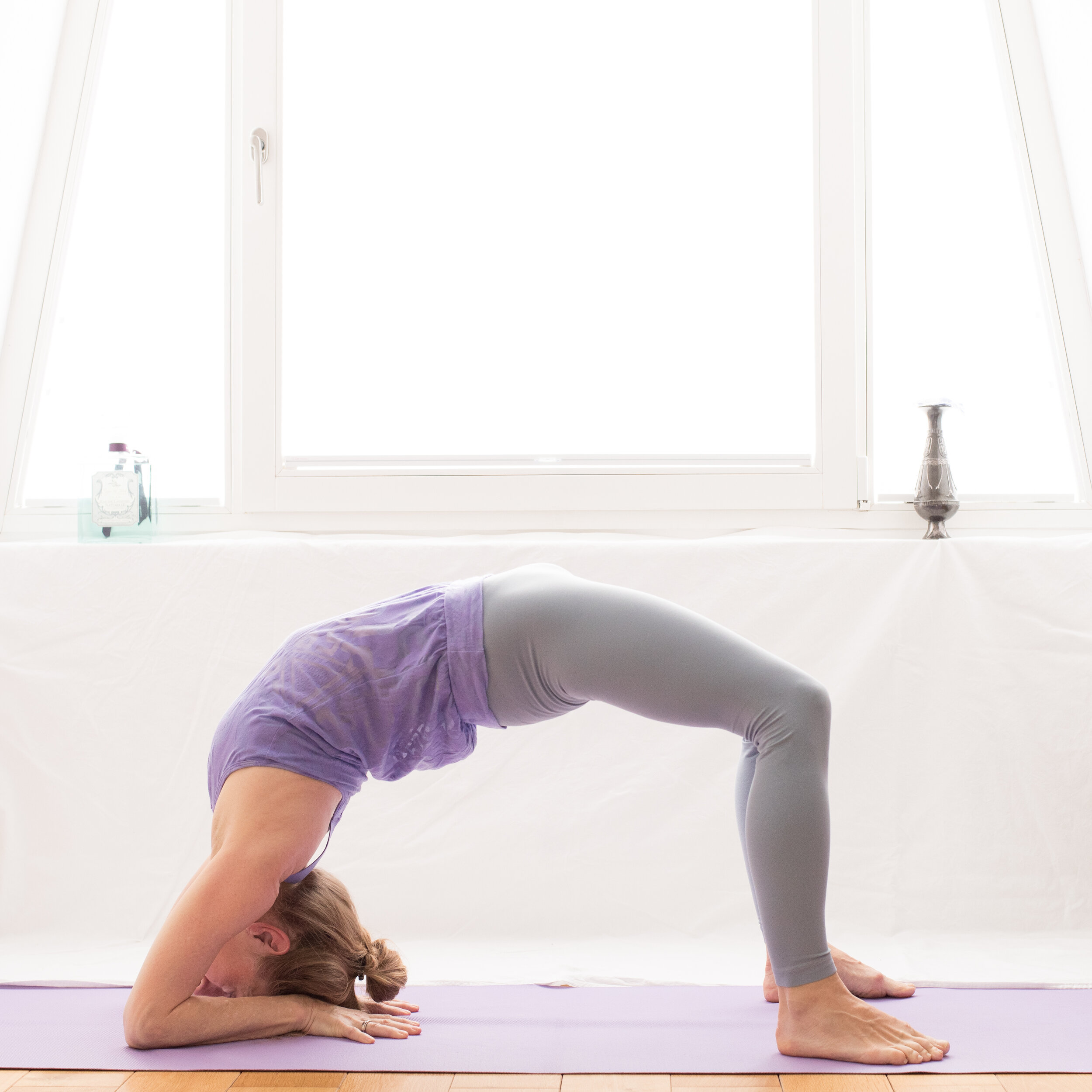Consistency is a key word. That means success comes when you practice regularly whatever it is. It’s not only time that one can put into a practice. It can also be intensity, concentration, the right mindset, passion. intelligence. Work harder than smarter is true, too. In order to know what smarter is one has to study the practice. Experience and knowing oneself helps to understand and to judge methods and tips and tricks. It’s necessary to study the asana and the own strength and weaknesses in order to move forward in a steady way.
It’s recommended to study the art of yoga by oneself. The own practice is an excellent source. These days it’s also possible to find excellent teacher online. Books and podcasts are another source.
The pictures show two back bending asanas and one forward bending asana. It’s one of the rules that I follow: After an intensive back bending comes a soft forward bending asana or a twist. This balances the body again. It’s also relaxing and calms the nervous system.
Time that I put into my practice:
Ideally 9 hours of Ashtanga Yoga (first and second series) in the morning.
I watch YouTube Videos and tutorials on Omstars.
I scroll through my Instagram account from time to time. It motivates me to see all these diligent yogis. Sometimes it’s the kick that I need before a morning practice.
I write this blog again. It motivates me and documents my yoga journey.
When I started with Ashtanga Yoga my only source was the book by David Swenson ‘Ashtanga Yoga’.
My yoga week has started with an intensive practice. Keep practicing.
